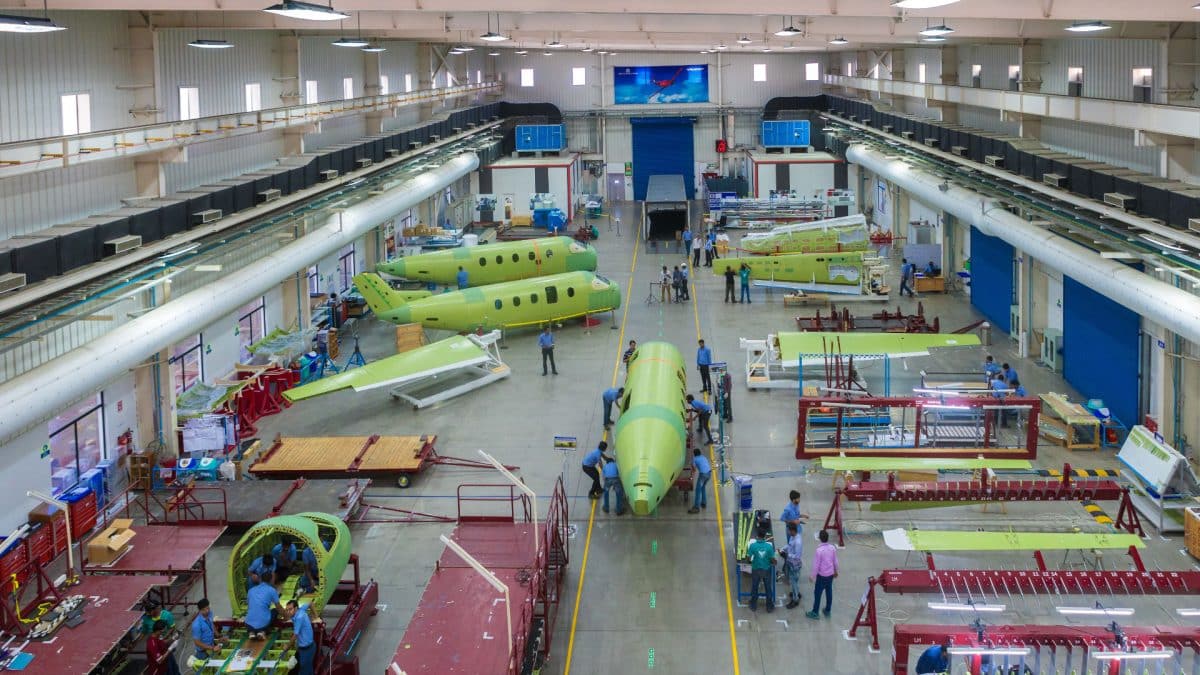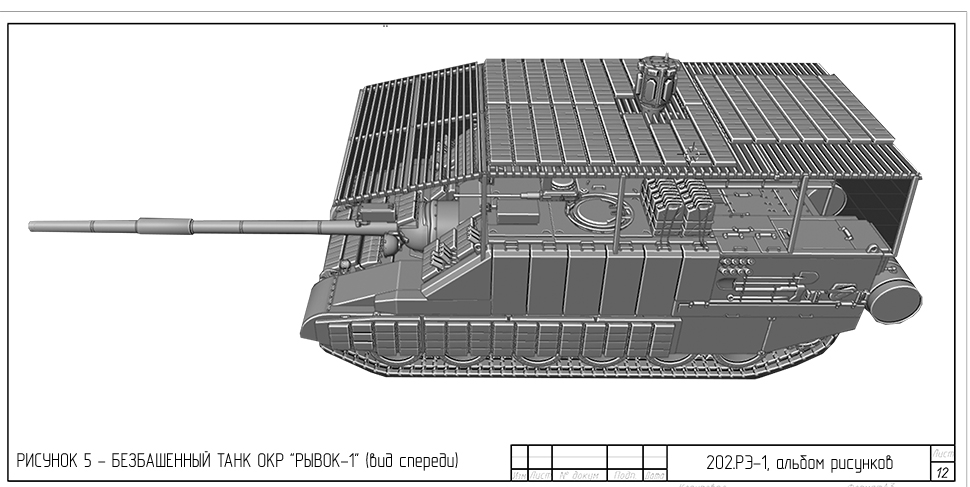SOURCE: AFI


In a strategic move to counter China’s expanding naval presence in the Indian Ocean Region (IOR), India is set to commission a new naval base for nuclear submarines and warships in coastal Andhra Pradesh by 2026. The base, located near the small village of Rambilli, approximately 50 km south of the Eastern Naval Command headquarters in Visakhapatnam, is part of India’s broader effort to strengthen its maritime capabilities.
This development, reported by The Times of India on April 7, 2025, coincides with ongoing upgrades to the Karwar naval base in Karnataka, signaling India’s intent to enhance both its eastern and western seaboards amid growing regional security challenges.
Continue readingSOURCE: AFI


In a significant boost to India’s aerospace and defense sector, Tata Advanced Systems Limited (TASL) has acquired a 7.4 lakh square foot plot in Karnataka’s Vemgal Industrial Area to establish a state-of-the-art aircraft manufacturing facility. The deal, valued at ?29.34 crore, was finalized with the Karnataka Industrial Areas Development Board (KIADB) under a lease-cum-sale agreement registered on February 24, 2025. The facility, which will include a final assembly line as well as Maintenance, Repair, and Overhaul (MRO) capabilities, marks a pivotal step toward enhancing India’s self-reliance in defense manufacturing while aligning with the government’s “Make in India” and “Atmanirbhar Bharat” initiatives.
The Vemgal Industrial Area, located along the Kolar-Chikkaballapur Road (SH-96) in Karnataka’s Kolar district, is approximately 10 km from the Narasapura and Jakkasandra industrial zones and about 38 km from Bengaluru. Spanning 666 acres, this industrial hub has become a preferred destination for high-value manufacturing, particularly in the aerospace and defense sectors. Bengaluru, often dubbed India’s aerospace capital, already hosts a thriving ecosystem of aviation and defense technology firms, making it an ideal location for TASL’s new venture.
Continue readingSOURCE: AFI

Odisha is steadily cementing its reputation as an industrially rich state, with a transformative project set to elevate its economic landscape. The Odisha government has greenlit the establishment of a titanium complex in Ganjam district, backed by an impressive investment of Rs 8000 crore. This ambitious initiative promises not only to generate significant employment opportunities but also to inject fresh momentum into the local economy, marking a pivotal step toward the state’s industrial and technological advancement.
The titanium complex is a flagship project under the Indo-Kazakh joint venture company (JVC), IREUK Titanium Limited, a collaboration between the Department of Atomic Energy (DAE), Government of India, and Kazakhstan’s Ust-Kamenogorsk Titanium and Magnesium Plant JSC (UKTMP JSC). This partnership, formalized in November 2024, leverages the strengths of both nations to create a robust titanium value chain within India. IREL (India) Limited, a central public sector undertaking under the DAE, will supply surplus ilmenite from its Odisha operations, while UKTMP JSC brings its globally recognized expertise in titanium production, including technology for manufacturing titanium slag.
Continue readingSOURCE: AFI


In a provocative statement published on April 7, 2025, in The Express Tribune, Air Commodore (Retd) Zahid Ul Hassan of the Pakistan Air Force (PAF) has claimed that the PAF is set to maintain a qualitative edge over the Indian Air Force (IAF) for the next 10 to 15 years. Hassan’s analysis hinges on the PAF’s ongoing efforts to fully operationalize its 5th generation platforms, while the IAF grapples with a strategic dilemma between pursuing self-reliance and opting for direct acquisitions.
This development, coupled with Pakistan’s focus on co-producing and acquiring 5th generation aircraft equipped with long-range stand-off weapons and first-shot capabilities, is likely to create significant challenges for the IAF, especially as China advances toward 6th generation aircraft for its air force.
Continue readingSOURCE: AFI


Taiwan marked a significant milestone in its defense strategy as its first domestically built submarine, the Hai Kun (SS-711), commenced sea trials, a development reported by Army Recognition. The submarine, constructed by the state-backed CSBC Corporation, is a cornerstone of Taiwan’s Indigenous Defense Submarine (IDS) program, aimed at strengthening its naval capabilities amid escalating tensions with China.
The Hai Kun’s trials, which began as scheduled despite earlier funding challenges, underscore Taiwan’s determination to counter the growing threat of a Chinese invasion, particularly as the People’s Liberation Army Navy (PLAN) intensifies its activities in the region.
Continue readingSOURCE: RAUNAK KUNDE / NEWS BEAT / IDRW.ORG


The Indian Air Force (IAF) is laying the groundwork for a transformative leap in unmanned warfare, with plans to develop a supersonic Unmanned Combat Aerial Vehicle (UCAV) boasting a massive 4-ton internal weapons bay (IBW) capacity and supercruise capability.
This ambitious vision, revealed through sources cited by idrw.org, complements the IAF’s ongoing commitment to kick-start the Aeronautical Development Establishment’s (ADE) proposed Ghatak UCAV—a 13-ton stealth platform with a 1.5-ton IBW. Together, these initiatives signal the IAF’s long-term strategy to field advanced, low-observable UCAVs capable of dominating future battlefields, though the supersonic variant remains a distant goal, potentially 10-15 years away.
Continue readingSOURCE: RAUNAK KUNDE / NEWS BEAT / IDRW.ORG


The recent tragic crash of an Indian Air Force (IAF) Jaguar strike aircraft, which resulted in the death of one pilot and the serious injury of another despite ejection, has brought renewed scrutiny to the aging Jaguar fleet and, significantly, the Martin-Baker Mk9 ejection seats they utilize. The incident has amplified existing concerns regarding the maintainability and support for these decades-old life-saving systems.
The Mk9 ejection seats were specifically designed in the late 1960s for the Sepecat Jaguar program. Sources within the defense establishment, as reported by idrw.org, indicate that fewer than 140 of these seats are currently operational within the IAF. Compounding the issue, the IAF is reportedly facing significant challenges in maintaining these critical systems due to widespread supply chain closures affecting the availability of necessary spares.
Continue readingSOURCE: RAUNAK KUNDE / NEWS BEAT / IDRW.ORG


The Indian Air Force (IAF) has announced a new initiative to address the limitations of low-level radar and communication coverage, which are often constrained by the radio line of sight (LOS) in challenging terrains. The IAF outlined its requirement for a portable system utilizing aerostat technology—or a similar solution—to provide low-level coverage over a range of 80-120 kilometers, equipped with radar, radio communication, and data connectivity capabilities.
This system is designed to enhance situational awareness and communication in areas where traditional ground-based systems struggle, such as mountainous regions or border areas with dense foliage, ensuring the IAF can maintain a robust air defense network across India’s diverse landscape.
Continue readingSOURCE: AFI


In a significant advancement for India’s defense technology landscape, Bangalore-based Prime Toolings has showcased its innovative Rotating Detonation Engine (RDE), a cutting-edge propulsion system designed for short-range missiles. This development, unveiled in early 2025, positions the company at the forefront of next-generation aerospace engineering, promising to enhance India’s missile capabilities with a technology that offers superior efficiency, compactness, and performance. Prime Toolings claims that their RDE could revolutionize short-range missile systems, aligning with India’s growing emphasis on indigenous defense solutions and self-reliance under the Atmanirbhar Bharat initiative.
A Rotating Detonation Engine represents a paradigm shift in propulsion technology. Unlike traditional jet or rocket engines that rely on deflagration (subsonic combustion), an RDE harnesses continuous detonation waves—supersonic combustion events that travel around an annular chamber. This process generates thrust more efficiently by maintaining constant volume combustion, potentially offering up to 25% greater fuel efficiency compared to conventional engines. The result is a lighter, more compact powerplant capable of delivering higher speeds and longer ranges without the complexity of moving parts like compressors or turbines.
Continue readingSOURCE: AFI


The Indian Air Force (IAF), tasked with securing one of the world’s most contested airspaces, operates a dizzying array of fighter jets—MiG-21s, MiG-29s, Su-30MKIs, Jaguars, Mirage 2000s, Rafales, and soon Tejas Mk1A and MkII—spanning seven distinct types from Russian, French, British, and Indian origins. This multi-vendor patchwork, while historically driven by geopolitical and technological needs, has become a logistical and operational albatross.
With a sanctioned strength of 42 squadrons but only 31 operational as of April 2025, and a spate of crashes exposing maintenance woes, the IAF must pivot toward commonality: a streamlined fleet of three to four jet types, sharing engine linkage and covering low, mid, and high-end roles. This shift would enhance efficiency, reduce costs, and bolster combat readiness without the burden of managing 7-8 aircraft types for overlapping missions.
Continue readingSOURCE: AFI


Uralvagonzavod (UVZ), Russia’s premier tank manufacturer and part of the Rostec state corporation, has unveiled a new modification of the T-90 tank, incorporating combat experience from the Special Military Operation (SMO). This latest iteration marks a significant departure from traditional tank design by eliminating the rotating turret—a feature long associated with Soviet and Russian main battle tanks since the introduction of the T-64.
According to UVZ’s press service, future tanks must retain powerful cannon armament, but the concept of a rotating turret is being abandoned due to its limitations on battlefield effectiveness and survivability. The company highlighted that modern combat scenarios have demonstrated that shifting fire between multiple targets, especially while on the move, is no longer a critical requirement for tank operations. Instead, the focus is shifting towards improving protection and firepower in a more static and controlled manner.
Continue readingSOURCE: AFI


Hyderabad-based Dvipa Defence, a rising name in India’s small arms manufacturing sector, is set to deliver 10 units of its indigenously developed Ugram assault rifles (7.62x51mm) to the Border Security Force (BSF) for trials, as reported in posts on X dated April 4, 2025. This development marks a significant milestone for the company and the Ugram rifle, which has been positioned as a fully homegrown solution to meet the operational needs of India’s armed forces and paramilitary units. The trials with the BSF are a crucial step toward potential induction, reflecting India’s broader push for self-reliance in defense production.
The Ugram, meaning “ferocious” in Sanskrit, was first unveiled in January 2024 by the Defence Research and Development Organisation’s (DRDO) Armament Research and Development Establishment (ARDE) in Pune, in collaboration with Dvipa Defence (then known as Dvipa Armour India Pvt Ltd). Developed in a record-breaking 100 days, the rifle was designed to meet the Indian Army’s General Staff Qualitative Requirements (GSQRs), offering a 7.62x51mm caliber platform with an effective range of 500 meters and a weight of under 4 kg. Its 20-round magazine, rivet-free design, and ability to fire in both single and full-auto modes make it a versatile contender, comparable to modern AK- and AR-type rifles globally.
Continue readingSOURCE: IDRW.ORG


In a move that signals deepening defense ties between Athens and New Delhi, Greece has expressed keen interest in exploring the integration of Indian technological components into its fleet of Rafale fighter jets. This potential collaboration could encompass advanced avionics, software, structural parts, and even weapon systems like the Astra missile and Smart Anti-Airfield Weapon (SAAW)—technologies already enhancing the Indian Air Force’s (IAF) Rafale fleet. With all 24 Rafale jets ordered by Greece now delivered—18 in 2021 and the remaining six in 2024—this development highlights a strategic pivot toward cost-effective, innovative solutions amid Greece’s efforts to modernize its air force.
Greece’s acquisition of the Dassault Rafale, a twin-engine, multi-role fighter renowned for its versatility, began with an inter-governmental agreement in January 2021. The Hellenic Air Force received 18 aircraft—six new Rafale C variants in the F3-R standard and 12 used F1 and F2 models from the French Air and Space Force—followed by six additional new jets delivered in 2024. This fleet strengthens Greece’s deterrence capabilities in the Eastern Mediterranean, a region marked by tensions with Turkey. However, the reliance on French-supplied weaponry, such as the high-cost Meteor Beyond Visual Range Air-to-Air Missile (BVRAAM) and the aging MICA BVRAAM with its limited range, has prompted Greece to seek alternatives that balance performance with affordability.
Continue readingSOURCE: IDRW.ORG


The Indian Institute of Technology Kharagpur (IIT Kharagpur), a premier engineering institution, is making a transformative investment in Directed Energy Deposition (DED) based additive manufacturing, a cutting-edge technology poised to redefine manufacturing processes. This strategic move promises to cultivate a new generation of material scientists whose innovations could galvanize the aerospace and medical industries. Once mastered, DED’s unique capabilities could position India as a leader in advanced manufacturing, driving breakthroughs in precision engineering and custom fabrication.
Directed Energy Deposition is an additive manufacturing technique that uses a focused energy source—typically a laser or electron beam—to melt and deposit material, layer by layer, directly onto a substrate or existing component. Unlike traditional subtractive manufacturing, which carves parts from solid blocks, or powder bed fusion methods like Selective Laser Melting (SLM), DED excels in its ability to build, repair, or clad large-scale metal structures with high precision. Materials such as titanium, aluminum, and nickel alloys, critical to aerospace and medical applications, are fed as powder or wire, melted in real-time, and fused to create complex geometries.
Continue readingSOURCE: AFI


In a significant strategic move, India has deployed its advanced S-400 air defense missile system near the Siliguri Corridor, colloquially known as the “Chicken’s Neck,” a narrow strip of land that connects mainland India to its northeastern states. This deployment comes as a direct response to heightened air activities by both Bangladesh and China in the region, raising concerns over security and territorial integrity in this geopolitically sensitive area.
The deployment follows reports of increased military activity by Bangladesh under the interim government led by Muhammad Yunus, which India considers an “illegal regime” following the ousting of former Prime Minister Sheikh Hasina in August 2024. Relations between New Delhi and Dhaka, once robust under Hasina’s leadership, have deteriorated sharply since her departure. Adding to the strain, Bangladesh has recently operationalized Turkish-procured Bayraktar TB2 unmanned aerial vehicles (UAVs) near the West Bengal border and Meghalaya, areas perilously close to the Chicken’s Neck.
Continue reading